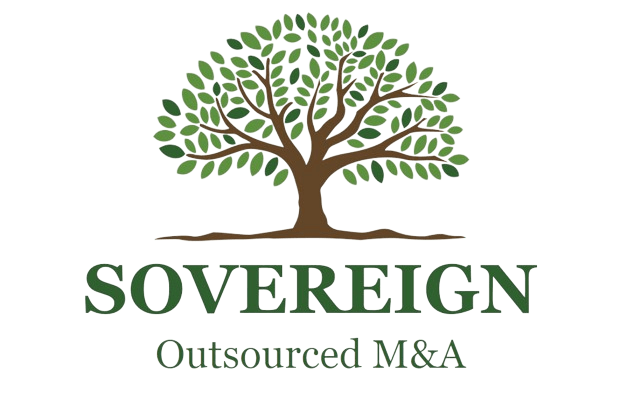For a business within a given market and of a given size, most practitioners already know what they are willing and able to pay. To this end, you might be surprised how little financial modeling is actually done on the buyside – at least in the lower middle market. On the other hand, how the deal is structured garners considerable more attention and buyers spend more time modeling out various scenarios than modeling what the business is worth on paper. The key takeaway here is that the devil is in the details. Just because your neighbor sold his business for $15 million and you sold your business for $15 million doesn’t necessarily mean you will walk away with the same proceeds at the end of the day.
Once you and the buyer have agreed to the total purchase price of $15 million, the conversation switches to how that $15 million will be paid to you, and very importantly, when. Buyers may deliver proceeds in the form of cash at the time of closing, an earnout to be paid at a later date based on achievement of a performance goal, and/or a percentage stake in the go-forward business (commonly known as a “rollover”).
Let’s tackle the rollover first. How much ownership you rollover is a multi-faceted decision you must make. For example, a younger entrepreneur seeking a growth-oriented partner may be willing to reinvest a relatively high percentage. A seller that is closer to retirement age may desire less of a rollover in favor of more cash at close. My suggestion is that you do a fair bit of soul-searching prior to engaging in conversations with buyers and figure out what your desired path will be after closing. This will have the added benefit of narrowing the potential buyer pool to the right groups and buyers will appreciate the conviction you show. Either way, it should be noted that buyers will likely want a majority stake both in terms of economics and in terms of corporate governance. Keep that in mind.
Pro Buyer Tip: Depending on the situation, buyers may stretch on valuation if you rollover a greater amount of proceeds. There are several reasons for this. First and foremost, it shows your conviction in the business which in turn gives the buyer confidence. The buyer will do due diligence “until the cows come home” but will never know as much about the company as you do. The fact that you are willing to put your money where your mouth is goes a long way. After closing, the fact the buyer can say that you are still a meaningful stakeholder in the business helps to smooth over conversations with customers and employees.
Aside from rollover investments, earnouts are also commonplace in lower middle market M&A. In some cases, earnouts are used as tools to bridge a valuation gap. For example, you may have recently launched a new product line that you have high hopes for. However, the product line does not yet have a proven track record that the buyer is willing to underwrite. Earnouts tied to the future sales/profitability of that product should be expected. On the other hand, buyers may include earnouts simply as a matter of course to manage risk. For example, a buyer may holdback 10% of the purchase price to be delivered to you in 12 months as long as revenue has not declined during that period.
Key Watchout for Rollovers: Rollovers and earnouts can both be tricky. Regarding rollovers, I would want to be very clear exactly what my role is going to be post-closing. This is where self-reflection prior to kicking off the sale process is useful. If I am rolling over 25% of the proceeds but will have day-to-day operating control of the business, that might make me comfortable with that level of investment. However, if I am rolling over 25% of the proceeds and have no involvement post-closing, I may want to think twice. In either case, I want to be very clear about who will sit on the board of directors/managers post-closing
and which decisions will require my approval. Pay particular attention to how this is papered in the
G2 Capital Advisors, LLC 813-668-7855 ggilbert@G2CapAdvisors.com
operating agreement. Your lawyer and investment banker should be able to help you with this. If not, I can step in from a business perspective. Other minority equity rights (e.g., preemptive rights, put rights, etc.) should also be considered.
Also be mindful of how the buyer will be funding the purchase. Using the above scenario of a 25% rollover, you would expect that the buyer puts up 75% of the equity in the deal. If not, then ask yourself what the buyer is bringing to the table in return for their equity stake. If they’re funding their position with debt (which is common), you should factor this into your equation as that debt will now sit in front of you too, altering your economics. Lastly, make sure you completely understand how the waterfall at exit is structured. Are the proceeds from the next sale split pro-rata from dollar one once the debt is paid off or does the buyer’s money have a preference? With a preference, the buyer may receive all of their principal (or even a multiple of their principal) and only then do the rollover investors starting getting paid back. In certain scenarios, this could mean that your 25% is ultimately worth much less than you thought.
Key Watchout for Earnouts: Earnouts can also be complicated and can sometimes result in legal action. As a seller, you want to be absolutely clear what the performance targets are and how they will be calculated. Best practice would be to include everything in writing in the purchase agreement (whether in the body of the agreement or an exhibit). A revenue-based target with a duration of 12 months after closing is probably the easiest structure and least likely to cause any arguments down-the-line. Heated arguments, especially if you partnered with the buyer, are never ideal. With revenue targets, it’s harder to play any games. You either made the target or you didn’t. However, should the concept of a gross profit target or EBITDA target be introduced, confirm how each is calculated and have that clearly documented in the purchase agreement. Keep in mind, the buyer may not have the same chart of accounts as you had pre-closing. Also critical to understand is what control over management decisions you will have post-closing. These management decisions may have an impact on whether you achieve the earnout or not.
No matter where you are in the process, G2 Capital Advisors would be happy to provide a second set of eyes and make sure the right questions are being asked.
Sincerely,
Graham Gilbert
M&A Done to a Standard
813-668-7855
Disclaimer: This article is for general information purposes and is not intended to be and should not be taken as financial or legal advice. G2 Capital Advisors, LLC is not responsible or liable for any actions taken or not taken as a result of this article. G2 Capital Advisors, LLC assumes no responsibility or liability for any errors or omissions in the content of this article. The information contained herein is provided on an “as is” basis with no guarantees of completeness, accuracy, usefulness or timeliness.





